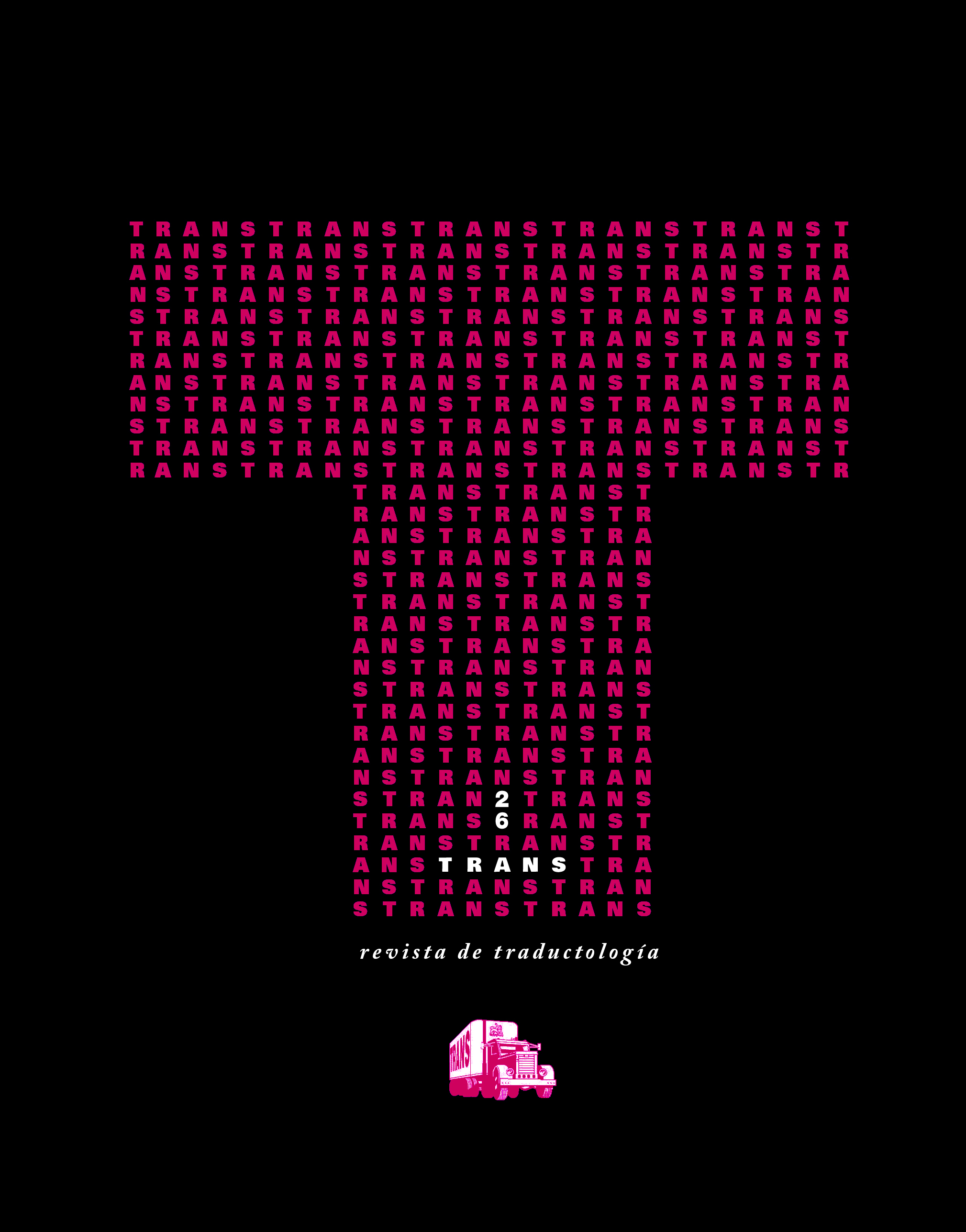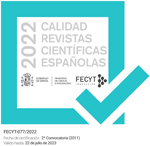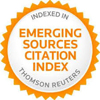Subtitling for the deaf and hard-of hearing in streaming TV series: an English and Spanis corpus study
DOI:
https://doi.org/10.24310/TRANS.2022.v26i1.13775Keywords:
Subtitles for the Deaf and Hard-of-Hearing, audiovisual translation, accessibility, corpus study, translation techniquesAbstract
In this paper, we present results from a corpus study that consists of Subtitles for the Deaf and Hard-of-Hearing (SDHoH) in English and Spanish TV-Series. Streaming series have begun to take over the audiovisual market. In this regard, we consider essential the need of create a set of rules of this new modality of accessible translation. The main objective of this work is to carry out a general statistical analysis of the articulated and non-articulated sounds that professional subtitlers select, both in English and Spanish, to translate in their subtitles. Thus, we also aim to identify whether there are similarities and/or differences between these two languages in the practice of subtitling. The methodology of this work is based on a corpus study composed of four episodes of an English-language series and four episodes of two Spanish-language series. In addition, we also aim to identify whether there are similarities and/or differences between these two languages in the translation practice of subtitling. Finally, this analysis will provide us with reliable data that will help us to detect the translation techniques most used in English and Spanish in SDHoH.
Downloads
Metrics
Publication Facts
Reviewer profiles N/A
Author statements
Indexed in
-
—
- Academic society
- N/A
- Publisher
- Universidad de Málaga
References
BAÑOS PIÑERO, Rocío Y Jorge DÍAZ CINTAS (eds.) (2015): Audiovisual Translation in a global context. Mapping an ever-changing landscape, Universidad de Surrey: Palgrave.
BORDWELL, David Y Kristin THOMPSON (2010): El arte cinematográfico: una introducción, Barcelona: Paidós.
CHION, Michel (2008): La audiovisión: introducción a un análisis conjunto de la imagen y el sonido, Barcelona: Paidós.
CNMC (2020): Panel de hogares, Madrid: Comisión Nacional de los Mercados y la Competencia.
DAVIES, Lyell (2016): «Netflix and the Coalition for an Open Internet», en Kevin McDonald y Daniel Smith-Rowsey (eds.) The Netflix Effect. Technology and Entertainment in the 21st Century, Nueva York: Bloomsbury, 15-32.
DCMP (Described and Captioned Media Program) (2019): Acerca de DCMP, <https://dcmp.org/about-dcmp>
DUFFER, Matt; Ross DUFFER; Shawn LEVY; Andrew STANTON Y Rebecca THOMAS (2016): Stranger Things [serie de televisión], Estados Unidos: Netflix.
GÓNZALEZ LÓPEZ, Alba; Lidia HERNÁNDEZ AGUADO y Anabel SERRANO MARTÍNEZ (2018): Subtitulado para Sordos: análisis de corpus del sonido animal, alternante y narratológico de la serie Strangers Things, Trabajo fin de grado inédito, Universidad de Granada.
GORBMAN, Claudia (1976): Unheard Melodies, Londres: BFI Publishing.
GOTTLIEB, Benjamin (1992): «Subtitling - A new university discipline », en Cay Dollerup y Anne Loddegaard (eds.) Teaching translation and interpreting: Training talent and experience, Ámsterdam: John Benjamins, 161-169.
JIMÉNEZ HURTADO, Catalina (2010): «Fundamentos teóricos del análisis de la AD», en Catalina Jiménez Hurtado, Ana Rodríguez Domínguez y Claudia Seibel (eds.) Un corpus de cine. Teoría y práctica de la audiodescripción, Granada: Ediciones Tragacanto, 13-56.
KALANTZI, Dimitra (2008): Subtitling for the deaf and hard of hearing: A corpus based methodology for the analysis of subtitles with a focus on segmentation and deletion, Tesis doctoral inédita, Universidad de Manchester.
LINDSEY, Cameron (2016): «Questioning Netflix’s Revolutionary Impact: Changes in the Business and Consumption of Television», en Kevin McDonald y Daniel Smith-Rowsey (eds.) The Netflix Effect. Technology and Entertainment in the 21st Century, Nueva York: Bloomsbury, 173-184.
LOMHEIM, Sylfes (1995): «L’écriture sur l’écran: strategies de sous-titrage à NRK: une étude de cas», FIT Newsletter-Nouvelles de la FIT 14:3-4, 288-293.
MARTÍ FERRIOL, José Luis. (2013) El método de traducción. Doblaje y subtitulación, Castellón: Trama.
NEVES, Josélia (2005): Audiovisual Translation: Subtitling for the Deaf and Hard- of-Hearing, Tesis doctoral inédita, Universidad de Surrey-Roehampton.
PÉREZ BOWIE, José Antonio. (2008) La teoría literaria en la teoría cinematográfica, Salamanca: Ediciones Universidad de Salamanca.
PESSOA DO NASCIMIENTO, Ana Katarinna (2017): «Translating sounds into words in subtitles for the deaf and hard of hearing: A corpus based approach», Trabalhos em Linguística Aplicada 56:2, 561-587.
PINA, Álex (2017): La casa de papel [serie de televisión], España: Netflix.
POYATOS, Fernando (1994, I, II): La comunicación no verbal, Madrid: Istmo.
SALAZAR, Ramón Y Dani DE LA ORDEN (2018): Élite [serie de televisión], España: Netflix.
VALENTINI, Cristina (2006): «A Multimedia Database for the Training of Audiovisual Translators», The Journal of Specialised Translation 6, 68-84.
VALENTINI, Cristina (2008): «The Forlì Corpus of Screen Translation: Exploring macrostructures», en Delia Chiaro, Christiane Heiss y Chiara Bucaria (eds.) Between text and image: Updating research in screen translation, Ámsterdam: John Benjamins, 37-50.
ZÁRATE, Soledad (2014): Subtitling for deaf children: Granting accessibility to audiovisual programmes in an educational way, Tesis doctoral inedita, Universidad College London.
Downloads
Published
How to Cite
Issue
Section
License
All contents published in TRANS. Revista de Traductología are protected under the Creative Commons Attribution-NonCommercial-ShareAlike 4.0 International (CC BY-NC-SA 4.0) license. All about this license is available in the following link: <http://creativecommons.org/licenses/by-nc-sa/4.0>
Users can copy, use, redistribute, share and exhibit publicly as long as:
- The original source and authorship of the material are cited (Journal, Publisher and URL of the work).
- It is not used for comercial purposes.
- The existence of the license and its especifications are mentioned.
- ShareAlike — If you remix, transform, or build upon the material, you must distribute your contributions under the same license as the original.
There are two sets of authors’ rights: moral and property rights. Moral rights are perpetual prerogatives, unrenounceable, not-transferable, unalienable, imprescriptible and inembargable. According to authors’ rights legislation, TRANS. Revista de Traductología recognizes and respects authors moral rights, as well as the ownership of property rights, which will be transferred to University of Malaga in open access.
The property rights are referred to the benefits that are gained by the use or the dissemination of works. TRANS. Revista de Traductología is published in an open access form and it is exclusively licenced by any means for doing or authorising distribution, dissemination, reproduction, , adaptation, translation or arrangement of works.
Authors are responsable for obtaining the necessary permission to use copyrighted images.













21.png)
